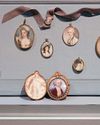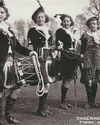
Lord Horatio Nelson has kept a watchful eye over London from his vantage point in Trafalgar Square for 180 years; the column from which he surveys his surroundings being as synonymous with London as red buses and Buckingham Palace.
About four million tourists pass through Trafalgar Square each year, possibly to pose for a picture with one of the four imposing lions which guard the base of the column, or to revel in the ornate fountains (featuring mermaids and dolphins) on New Year's Eve.
The story behind this imposing structure starts in 1805 when Admiral Horatio Nelson died at the Battle of Trafalgar, during which the Royal Navy defeated the combined fleets of the Spanish and French navies during the Third Coalition of the Napoleonic Wars. Yet the monument celebrating his bravery and unsurpassed seamanship would not become a reality for decades.
The column was eventually raised in 1843, but the initial idea was mooted five years earlier, when MPs, peers and other gentry, united in their desire to create a monument to the seafarer, formed the Nelson Memorial Committee to do just that. Their proposal (and the idea the project be funded by public subscription) was welcomed by the government. It was suggested the statue be situated outside the newly completed National Gallery in Trafalgar Square, making the location quite the cultural hotspot.
A competition to design the monument was launched in 1838 and attracted hundreds of entries and ideas, suggesting everything from temples to ship's prows. Architect William Railton won after wowing judges with his proposal for a Corinthian column made from Dartmoor granite, with a statue of Nelson at the top and four lions at its base. An elaborate Corinthian capital was proposed to support the structure, which is, legend has it, made from melted-down bronze guns salvaged from the Royal George, a warship that sank off Portsmouth harbour in 1782.
Denne historien er fra October 2023-utgaven av Best of British.
Start din 7-dagers gratis prøveperiode på Magzter GOLD for å få tilgang til tusenvis av utvalgte premiumhistorier og 9000+ magasiner og aviser.
Allerede abonnent ? Logg på
Denne historien er fra October 2023-utgaven av Best of British.
Start din 7-dagers gratis prøveperiode på Magzter GOLD for å få tilgang til tusenvis av utvalgte premiumhistorier og 9000+ magasiner og aviser.
Allerede abonnent? Logg på

Animal Magic
Hilary Middleton recalls a children's author whose tales are still enjoyed today

BACK IN TIME WITH COLIN BAKER
BoB's very own Time Lord prepares for an alternative to panto, recalls his early reading choices and having his scenes cut from two cutting edge comedies

Marvels in Miniature
Claire Saul learns about the exquisite works on display at a new exhibition being held at a historic Georgian mansion

The Last Post
Michael Foley witnessed the end of an era

The Box of Delights
Chris Hallam remembers how his Christmas 40 years ago was lit up by a magical television drama

The Queen of Stage and Screen
Chris Hallam pays tribute to actress Dame Maggie Smith

Other 07
Jonathan Sothcott looks at the seven Sir Roger Moore films that you should have in your collection

In the Best Possible Taste
Derek Lamb remembers the wireless wizardry of Kenny Everett

POSTCARD FROM BUCKINGHAMSHIRE
Bob Barton remembers a ghostly train journey, enjoys some wassailing and fulfils a long-held ambition of attending a lawnmower festival

MERCY MISSION
John Greeves recounts the remarkable exploits of Sunderland flying boat T9114